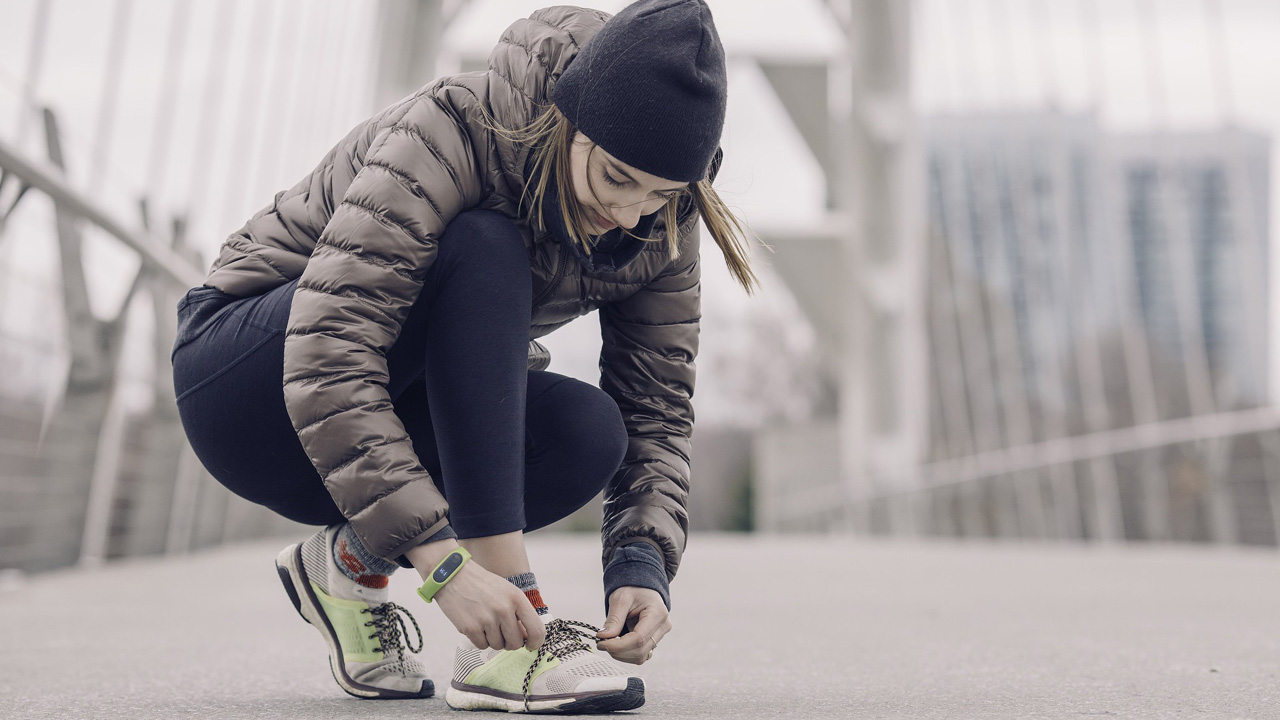Feeling unmotivated with your training now that winter is here? It’s common for group fitness class numbers to dwindle, and gym-goers and outdoor exercisers to pause their routine in the colder months. But just because it’s colder, darker in the morning/evening and sometimes rainy outside doesn’t mean you need to stop moving your body!
Here are some tips to help you maintain your training.

1. Change your routine
We’re creatures of habit – I get it! But winter lasts for three months, that’s a quarter of a year – so if you stop exercising completely during this time it can really mess with your health and fitness goals. Results come with consistency, so if your old routine no longer works for you in the colder months, replace it with activities that you’ll be motivated to do. This change may only be temporary, or it may help you find new and exciting ways to keep up your fitness.
2. Embrace the cold!
The opposite of the previous tip, you could always just keep your existing fitness routine. If you’re an outdoor exerciser or need to travel to get to your exercise location, the key to this is being prepared.
Plan the time you need to start/leave and stick to it. Be ready in advance; if you sit down and think about it too long or wait for the rain to stop you’ll never get out that door! Having appropriate clothing and footwear will help you be that little bit more motivated which brings us to the next point…
3. Wear layers
Layers that you can take off and put back on depending on the weather, how warm you’re feeling and what you’re doing can help you to be comfortable when training in cold or wet weather.
Have decent gear to keep you warm and as dry as possible when training outdoors. This means a lightweight windbreaker and/or raincoat. Depending on the activity, possibly thermals or compression gear. Use clothing and shoes that will dry quickly when wet or washed.
4. Be flexible
If you’ve planned an outdoor run and it’s absolutely bucketing down outside, you don’t have to exercise outside. Keep your ‘appointment’ time for your exercise session but swap out what you’re doing for an indoor option – whether that be on a treadmill or a completely different activity.
5. Stay safe
Outdoor surfaces can be slippery and wet, so have shoes with decent grip on the soles if you’re training outside to reduce risk of injury.
If you’re running or cycling at night – especially if you’re by the roadside – ensure you have reflective gear to so others will be able to see you better.
6. Warm up and cool down properly
These steps are often rushed through or skipped completely, but in winter time they’re just as important for framing your workout – if not more so. Ensuring you’re adequately warmed up helps your muscles and joints prepare for the task ahead which helps reduce injury risk. It’s important not to do stretching as part of this warmup until your body is warm.
It’s a good idea to chuck your layers of clothing back on as soon as you’ve finished if you’ve removed anything during your workout, then spend some time doing stretches to cool down at the end.
7. Take care of yourself
Winter is the time when colds, colds, flus and other lurgeys can take you out for weeks at a time. There’s no need to stop moving when this happens, but it is important to listen to your body and work with it. Rest and get decent sleep, exercise ‘normally’ when you can, and have an option for gentle stretching, yoga or a more leisurely walk if you’re feeling low on energy and motivation.

